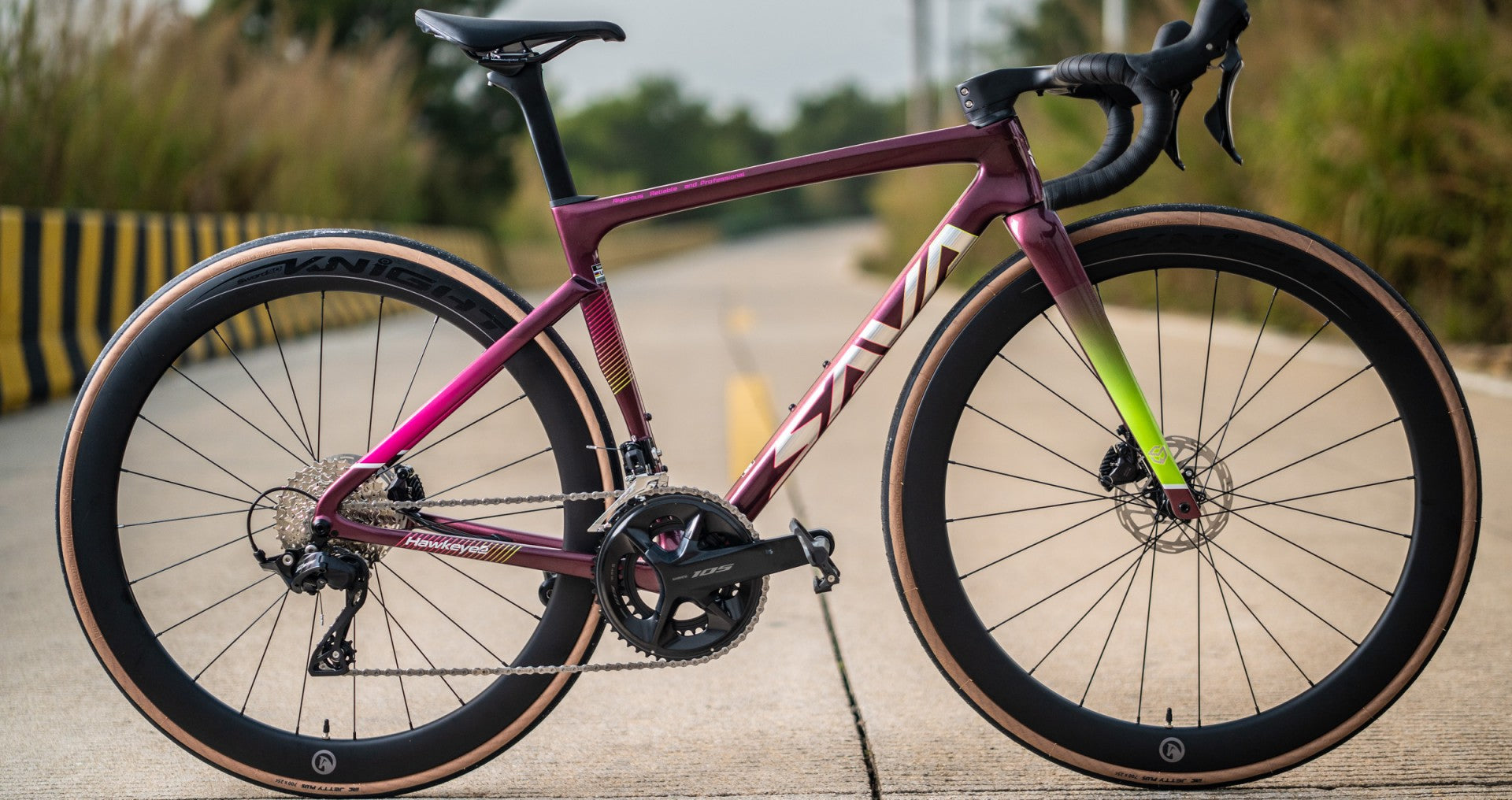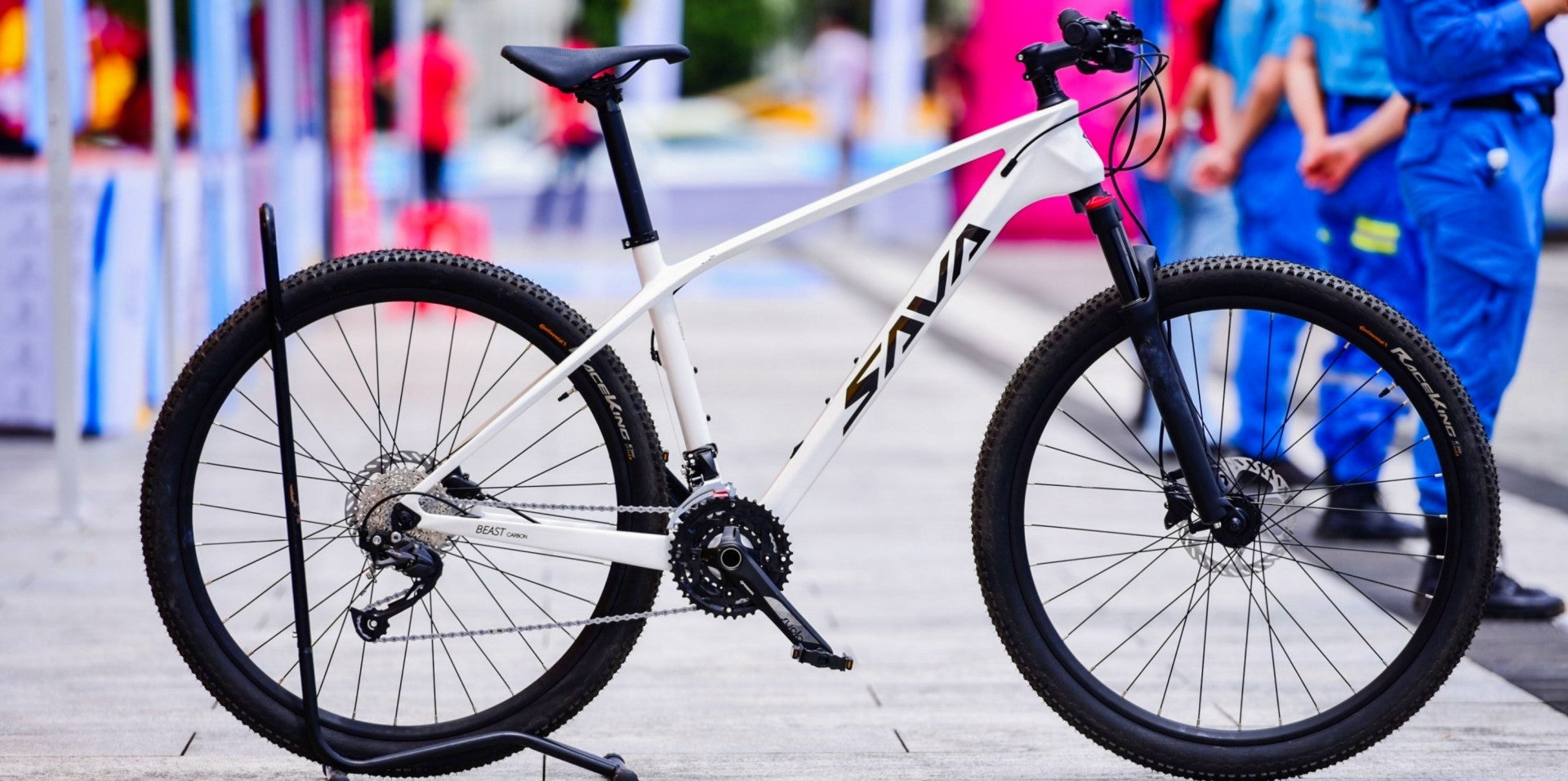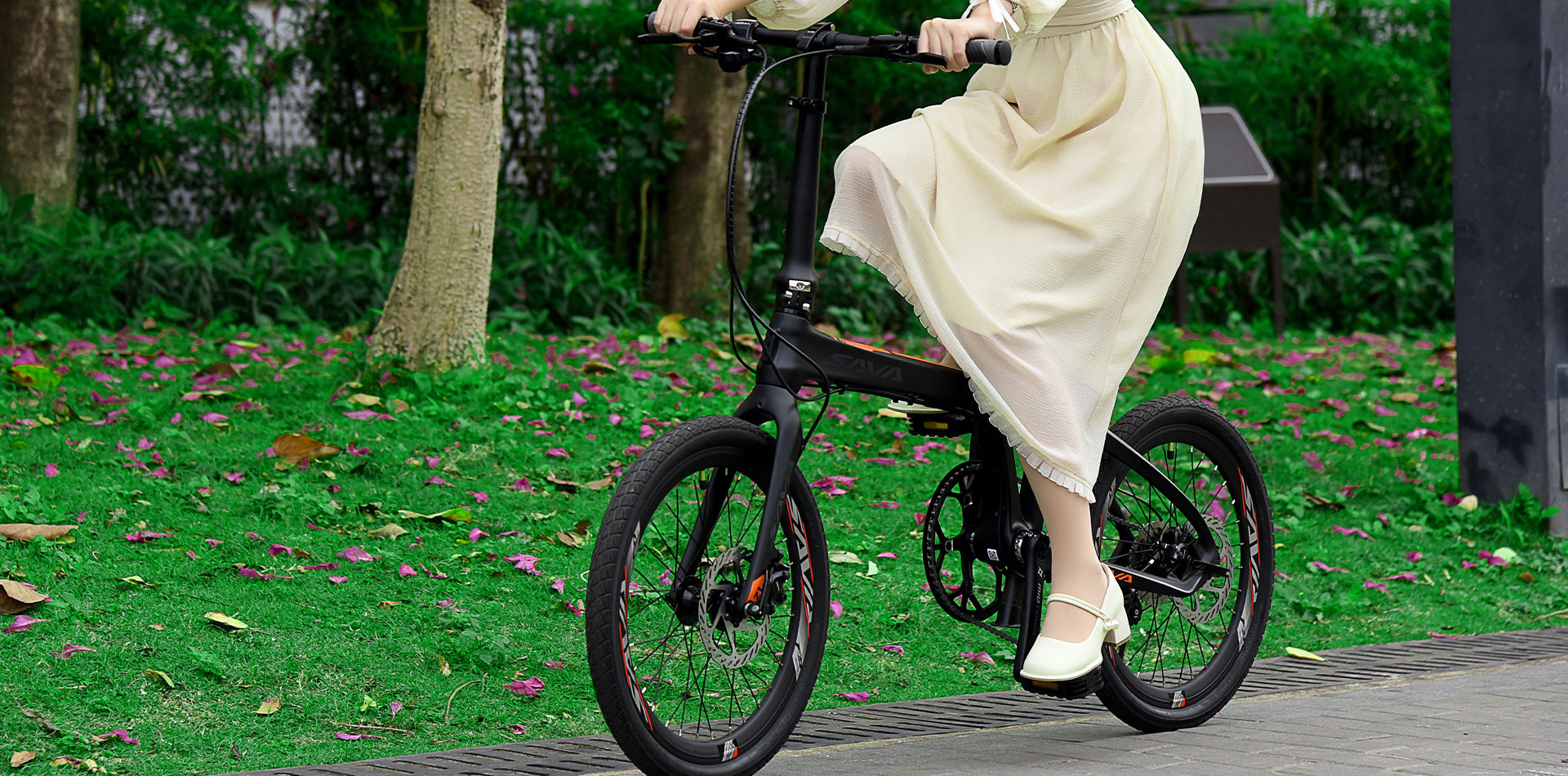Brzdy pro silniční kola: Ráfkové brzdy VS mechanické kotoučové VS hydraulické kotoučové
Když si vybíráte, jaký typ brzdového kola je pro vás ten pravý, existuje několik možností, které je třeba zvážit. Mechanické kotoučové brzdy, hydraulické kotoučové brzdy a ráfkové brzdy mají každý své výhody a nevýhody. Proto porovnáme tyto tři typy brzd, abychom vám pomohli učinit informované rozhodnutí.
Co jsou ráfkové brzdy?
Ráfkové brzdy, nazývané třmenové brzdy, jsou brzdové systémy sestávající ze dvou brzdových ramen (například ve tvaru U, V nebo konzolových), ke kterým jsou připevněny brzdové destičky. Brzdové rameno je spojeno s brzdovou pákou lankem. Jedná se o tradiční typ brzdy používaný na většině jízdních kol. Používají brzdové destičky, aby uchopily strany ráfku, aby zpomalily nebo zastavily kolo. Ráfkové brzdy jsou lehké, cenově dostupné a snadno se udržují. Jsou však méně účinné za mokra nebo bláta, protože brzdný povrch ráfku může klouzat. Kola s ráfkovou brzdou se nejčastěji vyskytují na tradičních silničních a městských kolech. Vhodné pro rovné silnice a obecnou jízdu ve městě, lehké ježdění a dojíždění.

Co jsou mechanické kotoučové brzdy?
Mechanické kotoučové brzdy používají lanko k aktivaci brzdového třmenu, který poté přitlačí brzdové destičky k rotoru a zpomalí nebo zastaví kolo. Obvykle jsou levnější než hydraulické kotoučové brzdy a snadněji se udržují a opravují. Mechanické kotoučové brzdy také nabízejí dobrou brzdnou sílu a jsou méně ovlivněny mokrem nebo blátem ve srovnání s ráfkovými brzdami. Kola s kotoučovými brzdami jsou široce používány na horských kolech, silničních kolech a městských kolech, zejména na špičkových modelech. Ideální pro různé jízdní prostředí včetně drsných kopců, strmých sjezdů a kluzkých podmínek

Co jsou hydraulické kotoučové brzdy?
Hydraulické kotoučové brzdy naproti tomu využívají hydraulickou kapalinu k přenosu síly z brzdové páky na třmen. Výsledkem je přesnější a konzistentnější brzdný výkon, protože hydraulické systémy jsou samonastavovací a vyžadují méně údržby. Hydraulické kotoučové brzdy poskytují vynikající brzdnou sílu a jsou vysoce doporučeny pro jezdce, kteří často jezdí na mokru nebo v blátě. Kola s hydraulickými kotoučovými brzdami se běžně používají na vysoce výkonných horských kolech a některých špičkových silničních kolech. Pro profesionální jezdce, kteří vyžadují vyšší brzdný výkon a větší přesnost nastavení brzd

Pro a proti
Nyní, když máme základní znalosti o jednotlivých typech brzd, porovnejme jejich klady a zápory:
Mechanické kotoučové brzdy:
- Pro:
- Dobrá brzdná síla
- Méně ovlivněné mokrem nebo blátem
- Jednodušší na údržbu a opravy
- nevýhody:
- Aktivace vyžaduje větší úsilí ruky
- Méně přesný a konzistentní brzdný výkon ve srovnání s hydraulickými kotoučovými brzdami
Hydraulické kotoučové brzdy:
- Pro:
- Vynikající brzdná schopnost
- Vysoce konzistentní a přesný brzdný výkon
- Samonastavitelné a vyžadují méně údržby
- nevýhody:
- Dražší než mechanické kotoučové brzdy
- Oprava může být náročnější
Ráfkové brzdy:
- Pro:
- Lehký
- Cenově dostupné
- Snadná údržba a oprava
- nevýhody:
- Méně účinné za mokra nebo bláta
- Brzdný výkon může být ovlivněn opotřebením ráfku
Proč na kolech s kotoučovými brzdami používáme pevné nápravy místo rychloupínacích pák?
1. Snadná demontáž a instalace
2.Pevná osa je tužší a stabilnější než rychloupínací páka . Tato konstrukce zlepšuje výkon systému kotoučových brzd, zejména při intenzivních brzdných podmínkách, jako je jízda na horském kole nebo strmé sjezdy.
3. Vliv na ježdění : Konstrukce pevné osy obvykle snižuje pohyb mezi nábojem a ráfkem, čímž zlepšuje celkovou tuhost náboje. To je výhodné pro zlepšení jízdní stability a ovladatelnosti.
3. Seřízení brzdového kotouče a brzdového třmenu: Použití pevné osy usnadňuje zajištění vyrovnání mezi brzdovým kotoučem a brzdovým třmenem. Je to proto, že konstrukce pevné nápravy často obsahují těsnější uložení, které pomáhá udržovat přesné vyrovnání a zlepšuje výkon kotoučových brzd.
4. Vhodné pro těžkou jízdu: Pro jízdu v těžkém provozu, která vyžaduje větší pevnost a tuhost, jako je jízda z kopce nebo jízda v terénu, jsou pevné nápravy obecně považovány za spolehlivější a bezpečnější volbu.
5. Omezení páky rychlého uvolnění: V některých případech může mít konstrukce rychloupínací páky určitá omezení, zejména při vysokých brzdných silách nebo extrémních jízdních podmínkách. Pevné nápravy poskytují větší pevnost a odolnost.
Nakonec výběr mezi mechanickými kotoučovými brzdami, hydraulickými kotoučovými brzdami a ráfkovými brzdami závisí na vašem jízdním stylu, rozpočtu a podmínkách, ve kterých obvykle jezdíte. Pokud upřednostňujete brzdnou sílu a konzistentní výkon, hydraulické kotoučové brzdy jsou správnou cestou. Pokud však máte omezený rozpočet nebo jezdíte na suchu, mohou být dostatečné mechanické kotoučové brzdy nebo ráfkové brzdy. Před rozhodnutím zvažte své potřeby a preference a při výběru brzd pro své kolo vždy upřednostněte bezpečnost.









Zanechat komentář